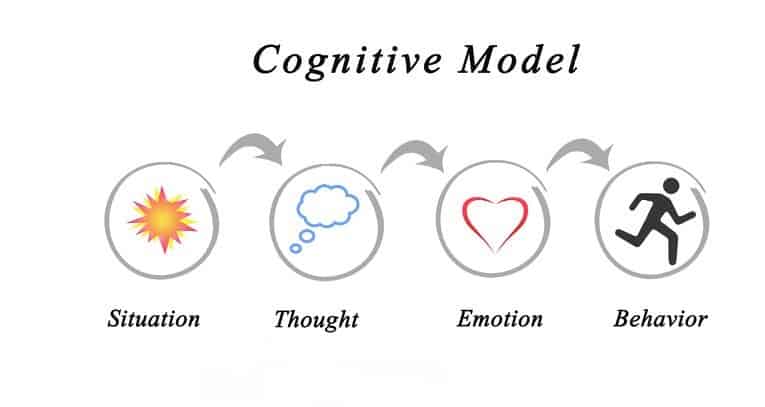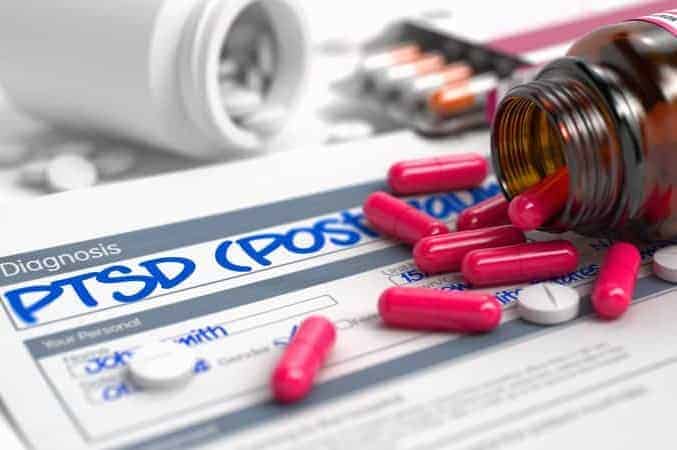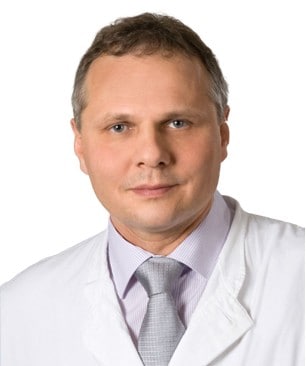Post-Traumatic Stress Disorder (PTSD) Treatment at CHMC in Dubai

Post-Traumatic Stress Disorder (PTSD) develops in people exposed to traumatic life-threatening events. It can develop not only in people directly harmed by trauma but also those witnessing such events by other individuals, especially those emotionally closed to them.
One of the triggering factors for PTST is the survivor’s guilt. Also, soldiers who killed the enemy might develop PTSD due to the perpetrator trauma.
CHMC is German Psychiatric Clinic treating the entire spectrum of mental health conditions, among them PTSD. The step preliminary to treatment of PTSD in our clinic in Dubai is in-depth diagnosis necessary to exclude other psychiatric conditions appearing with symptoms similar to PTSD.
Post-Traumatic Stress Disorder (PTSD). Symptoms and Clinical Picture
Posttraumatic Stress Disorder can occur shortly after trauma or be delayed. In some cases, symptoms may not appear for years, even decades.
Typical symptoms of Post-Traumatic Stress Disorder include:
Re-experiencing symptoms
Intrusive, distressing memories of the trauma, flashbacks, nightmares.
Avoidance symptoms
Emotional numbness, indifference, and detachment from surroundings and others, active avoidance of activities and situations that could trigger memories of the trauma. Sometimes, key aspects of the traumatic experience may not be fully remembered.
Hyperarousal symptoms
Sleep disturbances, irritability, difficulty concentrating, increased alertness, excessive startle response.
Other PTSD symptoms
Many individuals experience shattered self-image and worldview, and enduring distrust in others. They may also suffer from intense guilt, shame, or self-loathing. Performance in significant life areas is impaired, and coping with daily life becomes a struggle.
PTSD increases the risk of substance abuse, depression, anxiety and other mental health disorders.
Diagnosing Post-Traumatic Stress Disorder (PTSD) in our Clinic in Dubai
Diagnosis of PTSD is made when symptoms persist for more than four weeks and significantly affect functioning in important areas of life. If symptoms persist for more than three months, it is referred to as chronic PTSD.
In an extensive conversation, the doctor gathers the patient’s medical history, symptomatology, and possible risk factors, relating them to the overall situation and the patient’s current life circumstances. Standardized questionnaires are used as diagnostic tools, enabling a structured interview or assessing the patient’s self-assessment. It’s crucial that the conversation takes place in a trusting atmosphere so that the patient can open up and overcome any distrust towards the doctor.
The core of the diagnostic process involves carefully identifying the trauma that caused the disorder and its subjective significance to the individual. Each symptom of PTSD is systematically queried and evaluated in its severity. Additionally, other mental health conditions that can arise from extreme stress situations must be ruled out through differential diagnosis.
Mutual Influence of Risk and Protective Factors for PTSD
Risk and protective factors can mutually influence and/or compensate for each other.
Risk factors increase the likelihood of developing a particular condition when certain psychological or physiological traits, genetic predispositions, or environmental conditions are present.
Protective factors reduce the likelihood of developing a particular condition when specific psychological and physiological traits, genetic predispositions, or environmental conditions are present.
Risk Factors for Post-Traumatic Stress Disorder (PTSD)
Genetic factors increase the risk of developing PTSD. Environmental influences and learning experiences also play a role. Factors that promote the development of Posttraumatic Stress Disorder include:
- Lack of social support from family, friends, or colleagues after a traumatic experience.
- Adolescence or older age, female gender.
- Mental illnesses or traumas in one’s own history.
- Mental illnesses or traumas in the family.
- Prolonged duration and severity of the trauma.
Post-Traumatic Factors Shaping the Course of PTSD
Apart of an adequate therapy for PTSD there are post-traumating factors influencing the long-term prognosis and chances for healing.
Social Support
Among post-traumatic factors, the extent of social support is the most extensively researched factor. Perceived social support appears to influence the strength of the relationship between trauma severity and PTSD symptoms. Some studies suggest that negative social interactions, particularly among emergency responders, have a greater impact. However, perceived potential social support seems to be more relevant than actual received support.
Disclosure of Traumatic Experience
A crucial prerequisite for utilizing positive aspects of social support is the perceived ability to disclose traumatic experiences. Studies examining the effects of trauma disclosure provide mixed results, with both positive and negative effects on PTSD symptoms, where negative social reactions seem to be more relevant. Additionally, perceived ability to disclose distressing experiences is crucial.
Stigmatization
Perception of stigma, especially in job-related traumas, plays a significant role. First responders often fear stigma when considering seeking professional help. They worry about confidentiality breaches or potential professional repercussions if they disclose their psychological distress. Recent studies on police officers indicate that those affected by mental illness perceive stigma as likely.
Treatment for Post-Traumatic Stress Disorder (PTSD) at CHMC in Dubai
Within four weeks after the appearance of the symptoms the use of medication in the therapy for PTSD is not recommended, except the more severe cases. Combination of psychotherapy and pharmacotherapy (use of medication) in treatment for PTSD can improve the positive therapy outcome. The main goal of psychotherapy for PTSD is teaching the patients technics helping him to address the symptoms.
PTSD is frequently associated with other psychiatric diagnosis. The most frequent are depression, anxiety, and alcohol or drugs dependency. The combination of PTSD with other psychiatric disorders requires more complex therapy plan, wich usually extends the duration of the treatment.
Treatment for PTSD with Psychotherapy at CHMC in Dubai
The treatment of choice for PTSD is psychotherapy. The most effective psychotherapy methods for PTSD are CBT, EMDR or trauma focus psychotherapy. In some cases, especially those resistent to CBT the psychodynamic psychotherapy is indicated.
Raising Trauma Awareness
Trauma patients need to develop an awareness of their suffering, which helps them gradually incorporate the traumatic experience. Reducing the intensity of the underlying tension leads to symptom reduction.
The PTSD symptom reduction or even healing happens trough bringing the unconscious feelings to light and making them conscious. In consequence the psychodynamic psychotherapy employs the ego (the conscious part of the psyche) in understanding the cause and its effect.
Our clinic in Dubai offers all below listed forms of psychotherapeutic treatment for PTSD

Trauma-Focused Psychotherapy
TFP is the most effective evidence-based treatment for PTSD. “Trauma-focused” means that treatment focuses on the memory of the traumatic event and their associations. The three most effective forms of trauma-focused psychotherapy are: Eye Movement Desensitization and Reprocessing (EMDR) followed by two cognitive-behavioral therapy technics: Cognitive Processing Therapy (CPT) and Prolonged Exposure (PE).
Eye Movement Desensitization and Reprocessing (EMDR)
EMDR, is using sounds and hand movements while talking about trauma. This helps the brain process trauma memories. Eye movement desensitization and reprocessing (EMDR) is a form of psychotherapy developed and studied by Francine Shapiro. This is a technique which uses eye movements to facilitate the emotional processing of memories. EMDR helps the brain deal with flashbacks and “unwind” the destructive effect of traumatic experiences. It changes the person’s memory to attend to more adaptive information.
Cognitive Model of CBT (Cognitive-Behavioral Therapy)

Cognitive-behavioral therapy (CBT) is based on the idea that people internally interpret situations, thoughts, and emotions differently. Such misinterpretation activates protective mechanisms that cause patients to act out, through avoidance and social isolation.
CBT used in the treatment of PTSD tries to change the way a trauma victim feels and acts by influencing his patterns of thinking and behaviour. It uncovers the negative emotions, helping the individual to identify thoughts and feelings making him feel afraid.
Examples of CBT
The cognitive-behavioral therapy for PTSD might use exposure therapy, stress-inoculation training, cognitive processing therapy, behavioral activation and acceptance and commitment therapy. Many of these therapy methods have demonstrated success in treating the primary problems of PTSD and co-occurring depressive symptoms. Exposure therapy is a type of cognitive behavioral therapy that involves assisting trauma survivors to re-experience distressing trauma-related memories. The goal is to remind and to facilitate habituation and successful emotional processing of those memory. Exposure therapy programs include different technics. One of them is an imaginal confrontation with the traumatic memories. The other real-life exposure to trauma reminders.
Short-term treatment typical of CBT is often the only option in military settings. This attitude with limited treatment time greatly reduces the chances of recovery.
Prolonged Exposure (PE)
The prolonged Exposure (PE) therapy involves repetitive talking about the trauma until the memory is no longer a hindrance. This gives the patient more control over his trauma related thoughts and feelings, It helps to bring the traumatic memories to “the light”, making them conscious and decreasing their destructive effect.
Cognitive Processing Therapy (CPT)
CPT belongs to cognitive-behavioral therapy technics described below. Along with EMDR and PE, CPT, is the most effective evidence-based psychotherapy for PTSD. CPT focuses on thoughts and emotions caused by the traumatic events. It builds a bridge between bodily sensations and the associated thoughts and feelings. It helps to understand how the trauma changes feelings, thought and behaviour relieving the person from the vicious circle triggered by the event.
PTSD Treatment with Psychodynamic Psychotherapy
The CBT it’s the most well-researched PTSD treatment method, but it doesn’t help all patients. In some cases, the psychodynamic psychotherapy is the more effective method. CBT as therapeutic technique owes its roots to psychoanalytical psychotherapy. The conducted studies shown that psychodynamic psychotherapy can have several benefits. It is more effective for the individuals who were the victims of violence. The other group of patients responding good to psychodynamic psychotherapy are the perpetrators.
Methods of In-Depth Therapy in PTSD Treatment
Psychodynamic psychotherapy (counselling) places a large emphasis on the exploration of the unconscious. The main approach of the psychodynamic psychotherapy is uncovering and making conscious the hidden upsetting feelings, and thoughts. Such suppressed and unconscious content influences the patient’s current behaviour. That’s why the psychodynamic psychotherapy focuses not only on the encapsulated trauma content but also on the current conflicts with roots in the past.
Group Therapy. Treating PTSD with Interpersonal Psychotherapy
Interpersonal Psychotherapy is an effective group therapy treatment for PTSD involving meeting with a group of other people sharing the same, or a similar traumatic event. It is easier to talk about traumatic events with other people who have been through a similar experience. An open trial of interpersonal psychotherapy reported high rates of remission from PTSD symptoms without using exposure.

Medication in Treatment for Post-Traumatic Stress Disorder (PTSD)
The use of medication for PTSD treatment is not the first method of choice. However, the use of anti-depressants can be effective especially in the treatment of severe and/or residual PTSD and by co-existing psychiatric comorbidities such as depression. In such cases Selective serotonin reuptake inhibitors (SSRIs) and serotonin-norepinephrine reuptake inhibitors (SNRIs) are helpful in reducing the strength of the PTSD symptoms.
Family Support in Therapy for PTSD
After a traumatic experience, it’s crucial for the affected individual to be supported by their family members. This includes actively listening and taking the other person’s feelings seriously. Especially in case of suicidal statements, immediate medical assistance should be sought.
Encourage the affected individual to start therapy and be willing to be involved if the therapist deems it helpful. Accept any support offers yourself so you can better assist and stay healthy at the same time.
Supportive Treatment for Post-Traumatic Stress Disorder (PTSD)
The overall treatment plan often incorporates creative approaches such as music therapy or art therapy, as well as movement therapy and other methods to improve posture and movement patterns (Feldenkrais, Qi Gong, occupational therapy).
Through relaxation techniques (Yoga, autogenic training) or biofeedback, the patient learns to better control their symptoms. If necessary, as part of therapy, the individual receives support for career or social reorientation, grief processing, or relationship issues.
Post-Traumatic Stress Disorder (PTSD) – Prognosis
In most cases, post-traumatic stress disorder (PTSD) has good chances of healing if suitable therapy is started promptly. About half of those affected even recover without treatment (spontaneous remission).
However, if symptoms persist for years, around 30% of cases may develop a chronic course. With appropriate treatment, PTSD typically lasts an average of 3 years, while without therapy, it lasts around twice so long.
Post-Traumatic Stress Disorder (PTSD) Treatment at CHMC in Dubai. Summary
For overcoming Post-Traumatic Stress Disorder (PTSD), early diagnosis and comprehensive treatment by our psychiatrist and psychologists is essential.
The first step before we commence the therapy for PTSD is an in-depth diagnostic procedure. Diagnosis of PTSD is made when symptoms persist for more than four weeks and significantly affect functioning in important areas of life.
The diagnostic measures start with psychiatric evaluation, physical exam, and laboratory test. In the second step a thorough, psychological interview follows. In some cases, the psychometric testing might be indicated to secure the diagnosis.
Initially, we educate our patients extensively about their condition, preferably involving family or other significant individuals, and propose a suitable treatment plan. Once the patient is sufficiently stabilized, they must gradually confront their traumatic experiences and associated memories. Together with our therapeutic support, patients work through them and integrate them to ultimately reach closure. This also involves learning strategies to prevent possible relapses.
Psychotherapy is the Main Treatment Method for PTSD
Typically, treatment can be done on an outpatient basis. However, hospitalization may be necessary. We refer the patients to a psychiatric hospital, if in addition to PTSD the patient suffers from severe depressive symptoms suicidal risk or experiences acute psychotic episode.
The treatment primarily involves trauma-focused psychotherapy, if necessary, with medication support. Our psychiatric clinic in Dubai offers effective trauma processing methods including Cognitive Behavioral Therapy (CBT), Eye Movement Desensitization and Reprocessing (EMDR), as well as other techniques.
Treatment Goals
The goals of treatment include helping the individual gain control over involuntary memories, reducing accompanying symptoms such as anxiety, depression, sleep disturbances, and concentration problems. We assist our patients in integrating the trauma into their life story and finding new meaning in life.
Read more
What is causing PTSD? Read more
PTSD, recollection of facts. Read more

DR. GREGOR KOWAL
Senior Consultant in Psychiatry,
Psychotherapy And Family Medicine
(German Board)
Call +971 4 457 4240
